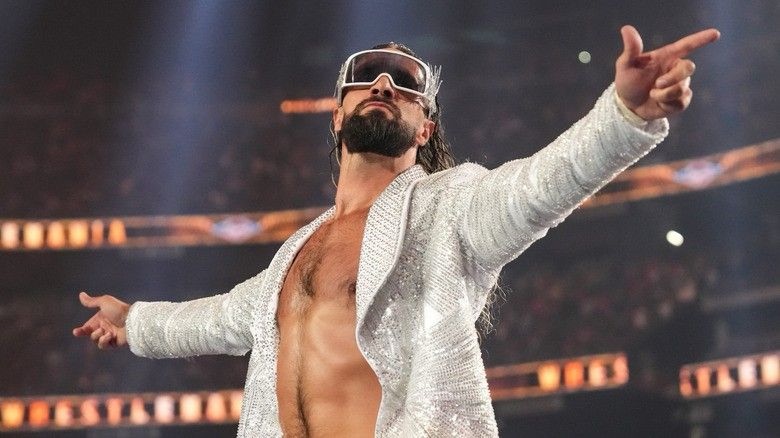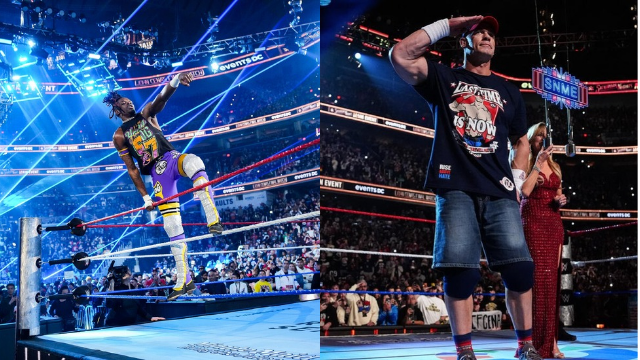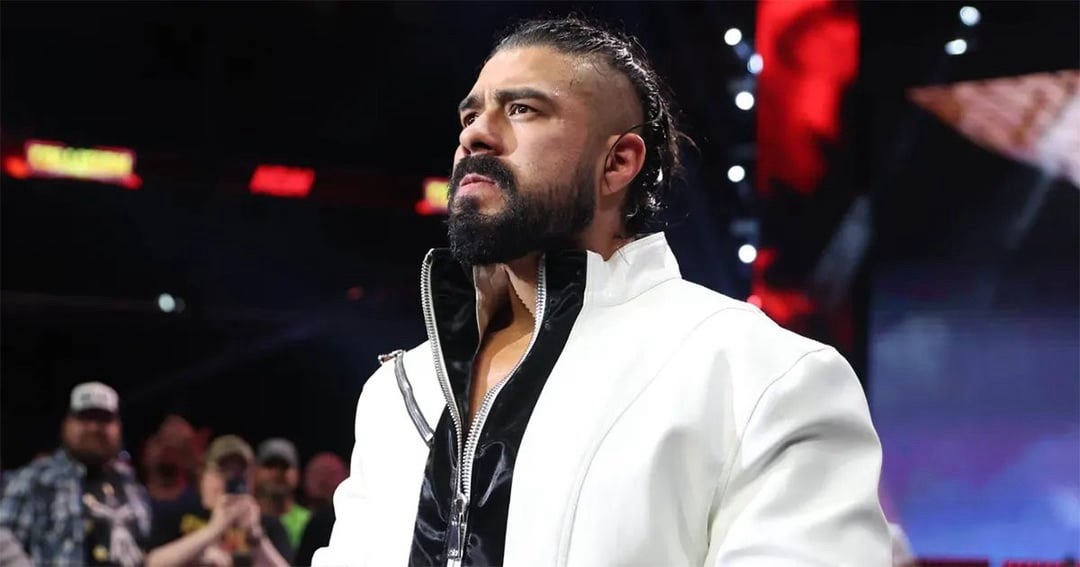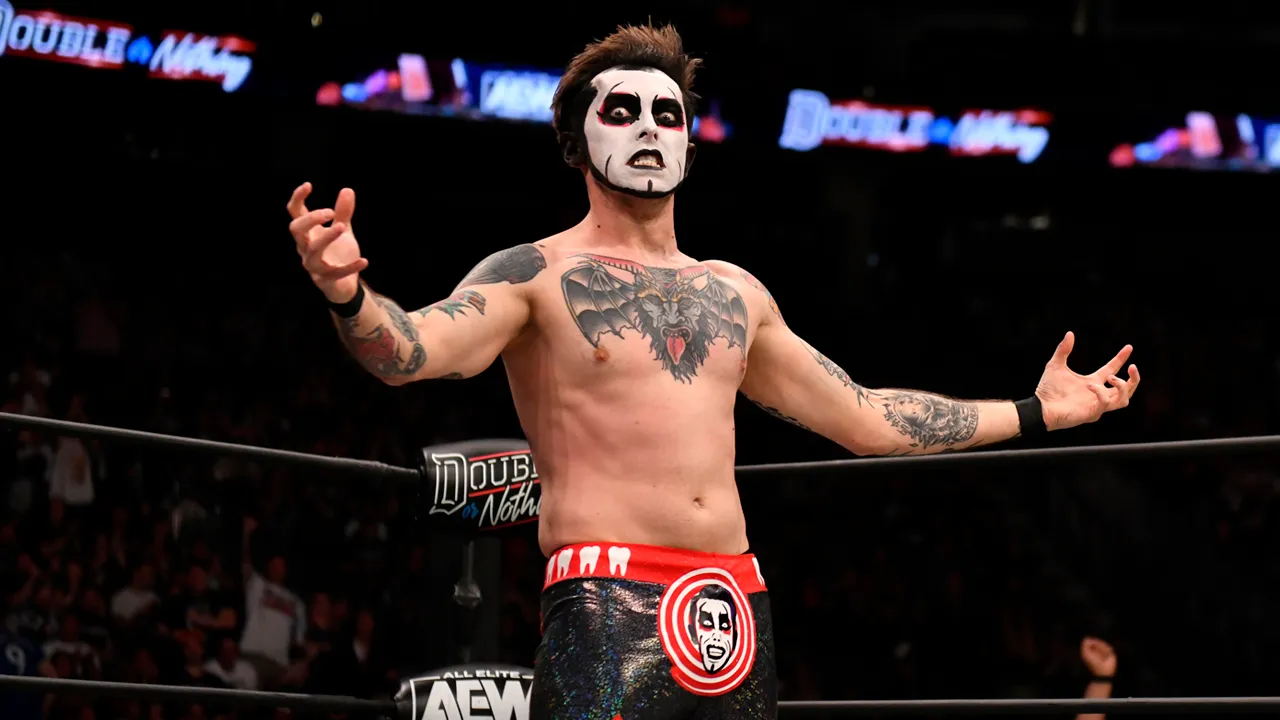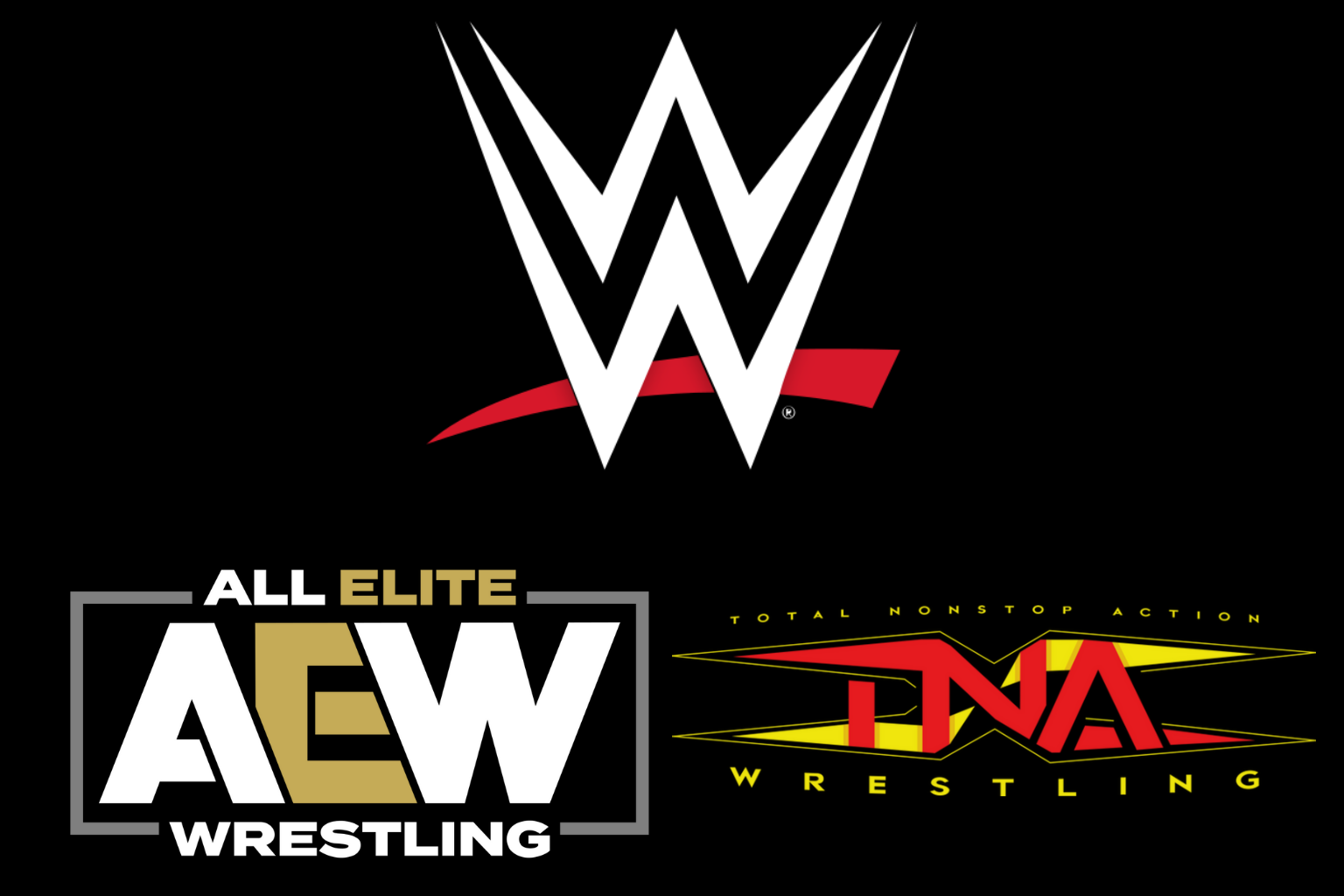When retelling the story of how WrestleMania came to be, WWE always presents themselves as the underdog. “The World Wrestling Federation struggled to get to where Vince McMahon wanted to be, but then he had a genius idea and saved wrestling.” There, I just saved you the two hours it would’ve taken for you to watch the WWE-produced True Story of WrestleMania documentary. A more cynical fan may point to the creation of WrestleMania as the death blow to a bygone era of wrestling. The WWF’s pageantry and lack of focus on the actual wrestling part of professional wrestling set the business back decades. As is usually the case, the truth is somewhere in the middle. However, it remains one of the most ambitious moments of Vincent K. McMahon’s career and the culmination of one of the hottest stretches in company history.
SummerSlam has no such story. McMahon created it as a show to add to a growing schedule of pay-per-views, as he wanted to continue moving away from closed circuit programming. However, it has taken on an identity of its own, becoming the second-largest show on WWE’s calendar and playing host to some of the most iconic and enduring moments and matches in their history. With the 36th edition of the “Biggest Party of the Summer” coming up on August 5, I would like to go through some of those.

The two most popular stars in the entire wrestling business teaming up to beat the evil giant heel and his even more evil partner (boss?) with a seemingly endless amount of money and resources is a story that can be transposed onto just about every other form of media. This time, it was The Mega Powers vs. The Mega Bucks, the main event of the first SummerSlam. The story of the Mega Powers is perhaps the most famous wrestling story of the 1980s, and by extension, one of the most retold wrestling stories of all time.
Hulk Hogan was the WWF Champion for nearly 1,500 days, one of the longest reigns in the championship’s history. He lost the title to Ted DiBiase on the first episode of The Main Event. Really, he lost the title to Andre the Giant (with the help of Earl Hebner) who then handed the title to DiBiase because he paid for it. Jack Tunney then vacated it after coming to the very appropriate conclusion that a wrestler should not be able to buy a title reign, especially not a reign with the top title in the company. Tunney created a tournament for the vacant championship, and after Hogan and Andre got eliminated in a double disqualification, Hogan assisted Randy Savage in winning his first world title. With that, the Mega Powers were officially born.
The match itself is about 14 minutes long and house show-like in its execution. Hogan plays to the crowd, and Savage does the same, opting for quick bursts of his flashy, ahead-of-its-time offense before tagging in Hogan so he can do what he does. Personally, I have never been a big fan of Hogan’s work, but in taking a more objective look at this match, there are few moments in his career that capture “Hulkamania” more than these 14 minutes do. The conquering hero coming back from experiencing a perceived major injustice to get something resembling revenge on the people who slighted him.
The crowd comes unglued when Hogan does something as simple as pointing at DiBiase after tagging in, and they immediately start booing when DiBiase or Andre slow down the match with their control portions. It’s that type of crowd control, that type of vociferous, unwavering support, that really shows why Hogan was the most popular man in the industry for what seemed like an eternity. Of course, the babyfaces win after Miss Elizabeth, then known only as Savage’s manager, takes off her skirt to distract DiBiase and Andre. That moment allowed for the Mega Powers to mount a comeback. The reaction to that moment, combined with the flying elbow drop/leg drop combination that followed, is one of what feels like genuine euphoria. No matter how many times they’ve seen Hogan win, they want to see him win again. Sure, the match that precedes it isn’t anything incredible and is most memorable for Elizabeth’s moment at the end, but I would be remiss if I didn’t cover it at all.

In Bret Hart’s 2007 autobiography, he tells a story of “The British Bulldog” Davey Boy Smith admitting he was “fooked” during the main event of SummerSlam 1992. Even after weeks of rehearsals, he forgot everything he was supposed to do. Part of that was likely nerves. A larger part of that was likely the drug addiction. It is inconceivable that a wrestler would smoke crack at all, let alone the night before a match. It is even more inconceivable that the same wrestler would smoke crack the night before he closes the second-biggest show of his company’s calendar year in front of over 70,000 fans at one of the most well-attended professional wrestling events in the recorded history of the industry. According to Hart, that’s what happened.
One might expect a match where one participant is high while the other is attempting to prevent things from going off the rails to be a sloppy and otherwise poor affair. Luckily, the sober half of the match was Bret Hart. By calling out every spot and leading Smith (who was a an excellent wrestler when he was sober, by the way) through the match, the result, almost miraculously, is a bout that stood alone as the greatest main event in the show’s history for a very long time.
Perhaps it was always meant to be that. Davey Boy Smith was the hometown boy (no pun intended) in front of the most people to attend a WWE show for over two decades. Bret Hart was arguably the best wrestler in the United States on the verge of a breakthrough that resulted in him winning his first WWF Championship at the end of the year. And they were related. You can’t script a better story than Smith winning his lone Intercontinental Championship in that environment, and what a moment it was.

The Battle of the Brothers Hart only lasted for two matches, but both of them stand favorably among the greatest matches in WWE history, nearly 30 years removed from their final one-on-one encounter on pay-per-view. While perhaps not as immediately eye-catching as their showdown at WrestleMania 10, the steel cage match at SummerSlam 1994 is 32 minutes of both men wrestling at a level so far ahead of most of their contemporaries that the result is still a bar that WWE-sanctioned cage matches have yet to reach. It is the crown jewel of Bret Hart’s world championship reigns and one of the biggest reasons Bret has a case for the greatest wrestler of all time. Like most Bret and Owen Hart matches, it is best if I don’t list moves, so I will instead implore you to watch it for yourself if you haven’t already to see just why it’s so great.
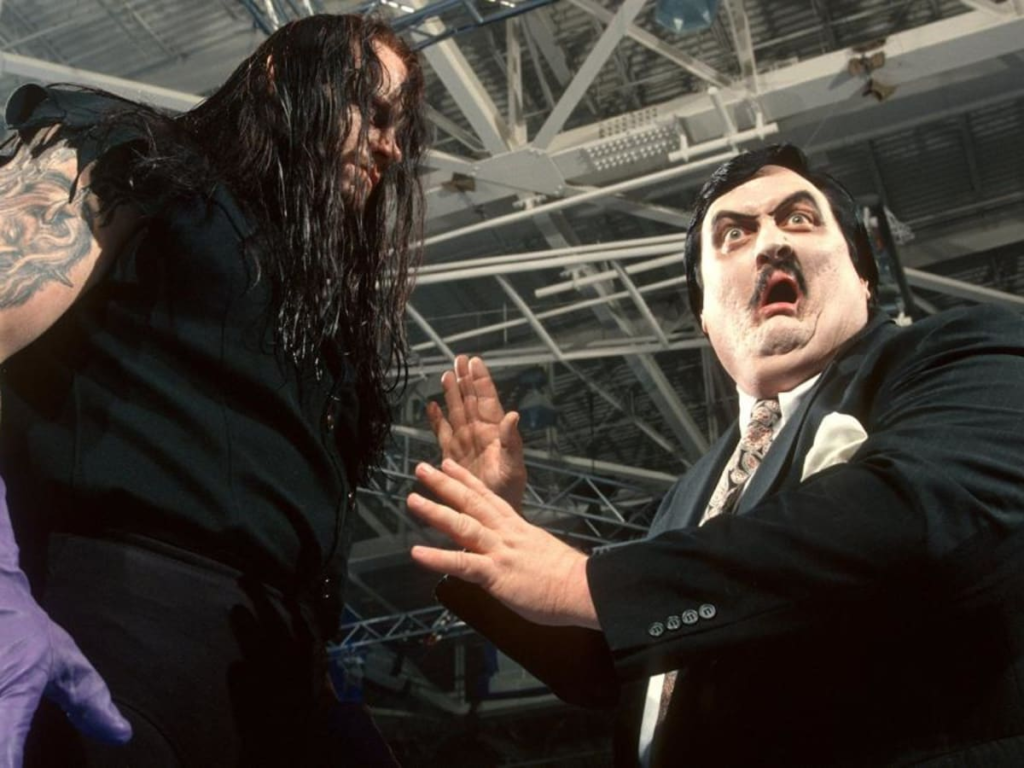
These aren’t all positive, and in hindsight, this is actually almost funny.
The WWF killed The Undertaker at the 1994 Royal Rumble in a Casket Match with the then-champion Yokozuna. The reality of his situation was that he was injured and needed time to heal, resulting in him taking most of the first seven months of the year to do so. In his time off, Ted DiBiase claimed that he successfully brought Undertaker back to the WWF. Paul Bearer claimed otherwise, instead asserting that the man DiBiase brought into the company was an impostor. In a vignette filmed to promote SummerSlam that year, Leslie Nielsen (of Airplane and The Naked Gun fame) played the role of detective, tasked with finding the real Undertaker. He was unsuccessful, of course.
At SummerSlam, The Undertaker matched up with “The Undertaker,” played by Brian Lee, a wrestler whose best years came with ECW after this stint. Undertaker was still a wrestler whose gimmick was “rarely feels pain,” while Lee was rarely good, so this match was doomed from before the bell even rang.
THIS was the main event on a card that featured one of the greatest matches of all time. An eight-minute affair that’s every bit as slow and plodding as one would expect, and it still isn’t even the worst match of the real Undertaker’s career. While rewatching this, my mind wandered from the match playing in front of me, so I will instead take the next few words to say that I wish we still had red, white, and blue ropes and a springier ring than we do now. It added so much to the WWF’s presentation, and it made big moves feel even bigger. Anyway, The Undertaker ended everyone’s suffering, and Brian Lee resurfaced in Smoky Mountain Wrestling soon after, mercifully ending what was an embarrassing few months for all parties.

Unbeknownst to all involved, SummerSlam 1997 put a time limit on the man who became the biggest draw in the wrestling industry’s history. Owen Hart and Steve Austin were having a very good, almost great match, when Hart went for a sitout Tombstone Piledriver, breaking Austin’s neck on impact. Austin could not move for several seconds before recovering just enough to end the match with the worst roll-up of all time. Somehow, he was back in time for Survivor Series, and when 1998 came around, Austin was a permanent fixture of the main event scene, winning his first WWF Championship at WrestleMania XIV. The rest is history.

1997 was not the year for the Hart family. With that in mind, this was still a great match, and what some fans consider to be the catalyst for the Attitude Era. Undertaker and Bret Hart were rivals, after the latter turned heel at WrestleMania 13 at the end of his classic match with Steve Austin. Shawn Michaels and Bret Hart were also rivals, but Undertaker didn’t realize that Michaels also had an issue with him. Undertaker was the WWF Champion and Michaels’ problems didn’t lie with Undertaker being champion, but with Hart even having another championship match.
Hart and Undertaker settled their differences at SummerSlam, with Michaels being named the special guest referee. The catch was that if Hart lost, he could never wrestle in the United States again. Hart was one of the highest-paid wrestlers in the United States and trusted with “top guy” duties in a post-Hogan World Wrestling Federation. However, as Bret’s contract status became more of a question among dirt sheet writers and readers than it had ever been in the past, interest in the result increased.
This match is the earliest version of the epic-style bouts that Undertaker became known for during his best years. It is also one of the first great matches of The Undertaker’s WWF career. It doesn’t hurt that he’s wrestling Bret Hart, of course. The finish is classic WWF sports entertainment chicanery, and one of the most important wrestling moments of the 1990s. After Hart spit in Michaels’ face, Michaels had enough. Despite being the referee, Michaels was going to take a steel chair to Hart’s head and, hopefully, it would be enough to end the match. Instead, Hart ducked, and Michaels hit Undertaker. That put Undertaker down long enough for Hart to become WWF Champion for the last time.
Eventually, Michaels turned heel and began feuding with Undertaker, leading to the first Hell In A Cell match. Hart’s character began complaining about being “screwed,” and his time in the WWF ended with him being legitimately screwed out of his title in Montreal. As middling as SummerSlam 1997 is, the final two matches changed professional wrestling forever.

The superstitious will tell you that walking under a ladder is bad luck. If that’s the case, The Rock climbing up a ladder to do his pose before this match should’ve cursed him for years to come. It didn’t. Instead, he and his dance partner Triple H had an excellent match that more than solidified their status as main event acts for years to come.
Physical and psychological, this is the skeleton of most good Triple H matches, which he’d perform to varying levels of quality for much of his run as a top talent. Here, it works to great effect, creating something that wasn’t quite common in the handful of ladder matches promoted by the WWF to that point. The Rock gets a lot of praise for everything else he did, and rightfully so, but he doesn’t get his flowers as an in-ring performer nearly as much as he should. This is before he had his run in 2001, which match for match remains the best year of his career. Here, he still plays the role of trash talking tweener incredibly well, opening the match with a few well-placed expletives in Triple H’s direction before being the first man to throw a punch. Everything is so fluid and so natural that it’s hard to believe that he was floundering in the midcard for any period.
The final Pedigree of the match features one of the loudest pops of Triple H’s career, and the pop he gets when he unhooks the Intercontinental Championship is even louder. The active members of D-Generation X come out to celebrate, and the crowd continue to shower both performers with applause. This was the moment where two Hall of Famers were born, and 25 years later, it’s every bit as good as it was 25 years ago.

How would fans remember Shawn Michaels if he stayed retired after 1998? Would fans have hailed him as a pioneer who never truly reached his full potential? Would the backstage stories have overshadowed what was a truly remarkable decade in the World Wrestling Federation? Is there anyone who’d still label him the Greatest Of All Time?
Those are questions we will never have an answer to. A little over four years after a back injury forced the Heartbreak Kid into a premature retirement, he was feuding with his on-and-off tag team partner and real-life best friend, Triple H. Kevin Nash introduced Michaels as the newest member of the New World Order, which was nearing the official end of its lifespan after Hulk Hogan turned face in the aftermath of his WrestleMania 18 showdown with The Rock. Soon after, Triple H convinced Michaels to bring back DX. To the surprise of no one, Triple H turned on him. Michaels challenged him to a “fight,” which materialized as an unsanctioned match at SummerSlam.
Shawn Michaels could not have had a better comeback match if he tried, and a lot of credit has to be given to Triple H for that. They built the match around the health of Michaels’ back, and that’s Triple H’s target for most of the 28 minutes. The moves looked painful, and Michaels selling his back like death creates a level of drama befitting of the stakes. When Michaels begins his comeback, the crowd is electric. The elbow drop off the ladder looked as perfect in 2002 as it did years earlier. He doesn’t even win the match with Sweet Chin Music. He rolls Triple H up after countering a Pedigree, and the crowd reaction to his victory is as raucous as expected.
Obviously, championship coronations and passing of the torch moments are big deals, which is why Brock Lesnar and The Rock closed this show. But these two made as compelling of a case for the main event spot as possible. They tried to replicate that special feeling repeatedly and couldn’t capture it again until they added a third man to the feud nearly a year and a half later, but this match at SummerSlam 2002, the start of a second chance at a career for Shawn Michaels, is the emotional peak of what many consider the greatest SummerSlam of all time.

Besides being horribly racist, Hulk Hogan was professional wrestling’s shrewdest businessman. He won matches he should have lost, and seldom lost matches cleanly. This, the first of a planned trilogy between himself and Shawn Michaels that would start at SummerSlam 2005 and end at a future pay-per-view, was instead the lone match between the two. Despite being very against the idea, WWE forced Michaels to turn heel to motivate the match. This very brief heel turn gave us the Who’s Your Daddy, Montreal? promo, so it wasn’t all bad. Considering he never turned heel again after this program with Hogan, it is an out-of-place few months in this chapter of his career.
The match is great for all the wrong reasons. The in-ring work is actually decent, considering Hulk Hogan was about 15 years past his physical peak and a mediocre wrestler on his best day. It is enhanced (or ruined, depending on who you ask) by Shawn Michaels deciding to oversell Hogan’s offense. Michaels responded Hogan’s big boot by flopping over himself, and Irish whips into any of the corners were instead an opportunity for Michaels to flip onto the top turnbuckle. This match would not have been nearly as entertaining if Michaels wrestled a serious 21 minutes with a soon-to-be-retired Hulk Hogan. I find it funny that the man who benefitted most from the single most egregious example of backstage politicking in the history of wrestling had his version of a tantrum during his one match against the greatest backstage politician in the history of the industry. But that tantrum sure is fun to watch.
Hogan won.
Obviously.

2009 was the first year of CM Punk’s WWE career that felt like he would actually break into the main event scene. Paul Heyman would have pushed Punk to the moon in 2006 if he had his way. In a match with some of the biggest names in the business’s history (Team DX vs. Team Rated RKO at Survivor Series 2006), it was not any of them who got the loudest chants of the night. It was CM Punk.
2009 was also the year WWE allowed him to turn heel, arguably saving his career. Sure, he was the World Heavyweight Champion the year prior, but he lost the title in a match he wasn’t even in after barely two months. If the goal was to have him in a prominent spot on the card, that was not a strong endorsement. When he turned heel, it gave his work a new life. He won his second consecutive Money In The Bank ladder match and cashed it in on Jeff Hardy, winning back the title he never actually lost and starting the best feud of Jeff Hardy’s entire singles career.
The Punk and Hardy feud was rooted in reality. Punk is famously straight edge, having it tattooed on his stomach. Hardy is, well, not. The questions surrounding his dependability almost led to him never winning the WWE Championship. And the less said about Victory Road or last year’s DUI arrest, the better. Hardy was also the most popular act in WWE, no matter how much his real life threatened to blow up everything he worked for in his professional life. Punk threw jabs at Hardy’s inability to get out of his own way and reprimanded fans for throwing their support behind him.
The apex of this feud was their Tables, Ladders, & Chairs match at SummerSlam, in what was a home game for Hardy. It is disappointing that this match does not get the widespread praise it should, because it’s one of the greatest TLC matches of all time and the last truly great one before a yearly pay-per-view watered the stipulation down. It’s creative, violent, and features a career highlight for Hardy. The Swanton Bomb off of a 20-foot ladder onto Punk, laid on the Spanish announce table below.
I don’t know if it was Vince McMahon’s direction or the decades of experience Jim Ross has, but when Hardy hits that move, he and Matt Striker both go completely silent for about three minutes. That time allows viewers at home to absorb what they just witnessed while also allowing the crowd to dictate the moment. Basketball commentators do the same during especially entertaining scoring runs, and it works just as well during this match.
With Hardy being lifted onto a stretcher, the opportunistic Punk sees his chance to sneak out of the Staples Center with a win. Hardy makes his last effort only to take a roundhouse kick to the ribs, falling off the ladder and leaving Punk a three-time World Heavyweight Champion. It’s a career-best performance from Hardy and one of Punk’s best performances in WWE. The two had one more match that ended up being Hardy’s last in WWE for nearly eight years, but as good as it is, it’s not this. One of the greatest SummerSlam main events in history at a time where it was unheard of for a show to be closed by anyone other than John Cena or Randy Orton. Most importantly, a coming out party for one of WWE’s greatest-ever talents.

When John Cena was the face of WWE, one of the most persistent criticisms levied his way was that he lacked as an in-ring performer. The great matches he had were always products of his opponent being great, not because Cena himself held up his end of the deal.
Those criticisms were never valid, but by 2013, they were the least valid they had ever been. Cena was on fire, playing his role to perfection in arguably the greatest main event in company history against CM Punk at Money In The Bank 2011. He had Brock Lesnar’s return match, an almost perfect Extreme Rules match that may have been actually perfect if Lesnar won. Earlier in 2013, he was part of arguably the greatest television match in company history, also against CM Punk on the February 25 episode of Raw.
SummerSlam 2013 is a great show, featuring an excellent match between Punk and Lesnar in the best match of Lesnar’s entire professional wrestling career. The main event, John Cena vs. Daniel Bryan for the WWE World Heavyweight Championship, is every bit as great.
Bryan was white hot, with every setback that kept him from winning the big one making him even more popular. Cena was the face of WWE, but divided fan opinion more than maybe any face before him. The children loved him, the women loved him, but the “smart” fan, the fan who frequented the forums and called people like Bryan and Punk the best wrestlers in the world before it was popular to do so, wholly rejected him. The result is about as perfect of a WWE main event as it gets. Cena got his reactions because of course he did, but he was not the man people came to see on that night. Bryan was. And when they wrestled for 22 minutes, making callbacks to a match they had on Velocity a decade earlier and stringing together crisp, well-choreographed sequences with Bryan as the de facto underdog, the crowd had no choice but to give both men their credit.
When Bryan wins the title with his newly debuted Knee Plus finisher, the fans in attendance come unglued. When Randy Orton cashes in the Money In The Bank contract on Bryan after a Triple H heel turn, it deflates the crowd, but what it also did was send the Yes Movement into even higher gear. No matter how hard WWE management tried to ignore it, Bryan was the guy that everyone wanted to root for. Fans had to wait a while longer for the big moment, but it was worth it in the end.

In the 1990s, DC Comics was struggling. That’s not entirely true. Batman was one of the most popular characters in the entire comic book industry, both with his various comic runs and wildly popular animated series. It would be more accurate to say that Superman was struggling.
Superman was DC’s ace, the one who was there at the beginning and the one who would probably outlast everyone else by the end. However, as the years went by, the interest in a character like Superman waned. He was the embodiment of “good.” He did nothing wrong, and if he did, he was right in the end. That type of character was not appealing at that moment, and it reflected in Superman’s sales. To revive the character, DC did something they had never considered doing before. They killed him.
The Death of Superman was so controversial that mainstream news outlets covered it. Fans believed DC permanently killed Clark Kent off. Saturday Night Live had a sketch that depicted DC and Marvel characters going to Superman’s funeral. The coverage of the comic resulted in millions of sales, becoming one of the highest-selling comics of all time.
They revived Superman at the end, because most comic book characters don’t die forever. Especially not the one at the top of the hierarchy. Supergirl fixed his costume, and all was right in Metropolis again. Mostly. But his initial death was still so shocking. When he returned, he was more popular than he was when he died. That popularity has not faltered since.

Becky Lynch’s return to the ring at SummerSlam 2021 did not come as she likely hoped. One Manhandle Slam and 26 seconds later, she was the SmackDown Women’s Champion, ending Bianca Belair’s reign at 133 days and infuriating fans everywhere. A year later, Becky Lynch and Bianca Belair had the match fans expected them to have before, and the result is one of the best opening matches… ever?
The action here is too quick to call, with Belair’s blend of power and athleticism foiling Lynch’s more grounded offense. Lynch dislocated her shoulder early in the match, and the two of them still went 15 minutes and produced one of WWE’s best matches of the year. Lynch went for broke, attempting a second rope Manhandle Slam, before Belair countered it with one of the most beautiful Spanish Flys I’ve ever seen, then hitting a KOD, her second of the match, to retain her Raw Women’s Championship. The hometown woman getting her signature win in front of nearly 50,000 people. It was the best defense of what was a great, record-setting reign, and a highlight in the careers of two of WWE’s greatest-ever female performers.

Brock Lesnar is no stranger to SummerSlam. His first world title win came at the 2002 event, and he closed every year of the show from 2014 to 2019. Last year was his 11th match at the Biggest Party of the Summer, and while it’s not technically the best, it is by far the most entertaining.
Brock Lesnar and Roman Reigns wrestled one another too many times. They even closed last year’s WrestleMania in what fans (myself included) hoped would be the final confrontation between the two, so it was disappointing to learn that the main event of yet another pay-per-view was going to be Brock Lesnar vs. Roman Reigns for the Undisputed WWE Universal Championship. The difference between the other bouts and this one is that it was a Last Man Standing match.
Lesnar enters the arena on a tractor, and as soon as he does that, it’s clear that chaos is going to ensue. The two brawl, with broken announce tables, a broken Paul Heyman unsure of which side he’s on, and later, a broken Austin Theory as he once again failed to cash in his Money In The Bank contract. The enduring image from this match is the destroyed ring. Lesnar used the tractor that he entered the arena on to flip Reigns out of the ring and create a truly shocking visual. The Usos attempted to make the save, but Lesnar took them out. After hitting him with two different belts, Reigns buried Lesnar under an announce table, chairs, and everything else he could to keep him down for the count, retaining his title. It’s a match that has to be seen to be believed, and seven years removed from their first encounter, it is truly remarkable that Lesnar and Reigns could make magic one more time.
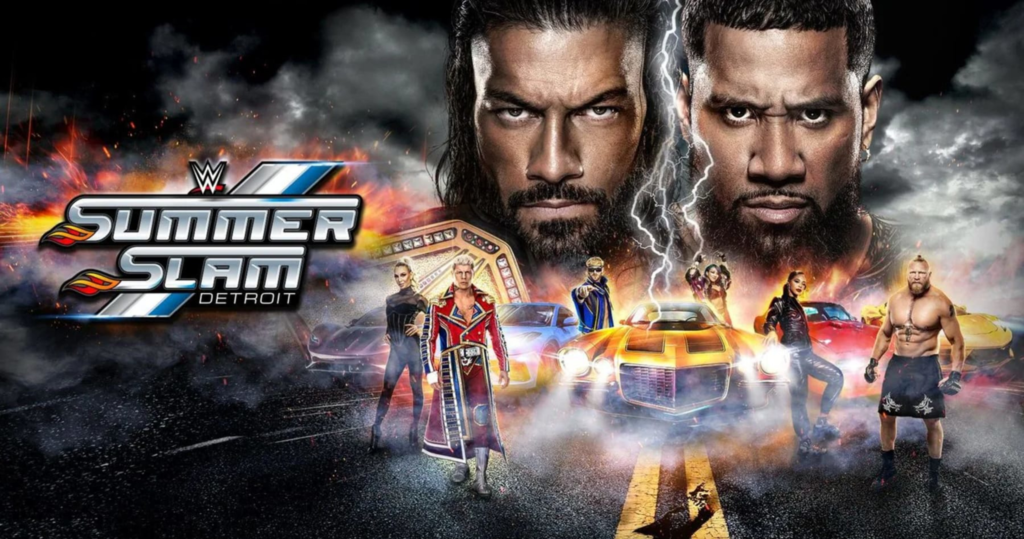
Which brings me to 2023. On paper, this card is one of the best of the Triple H era. Roman Reigns has a chance to add to his historic title reign in his third match against Jey Uso. Gunther has a chance to become the longest-reigning International Champion of all time, and a successful defense will probably ensure that result. The women’s title match can potentially steal the show, and the woman who leaves the show with the title may not even be in the match. There are several more matches that are likely to deliver. Will they produce another defining moment? We’ll find out on Saturday, but one thing they will certainly do is try.

